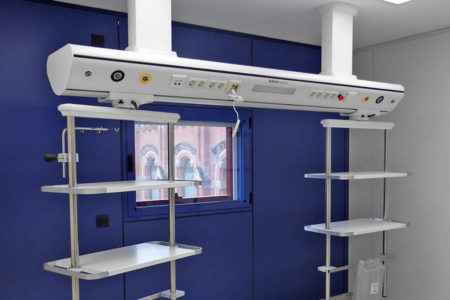The relationship between hospitals, sustainability and climate change has become one of the key elements of green innovation in hospitals and the quest for greater wellbeing for all parties involved.
As the world’s population grows and natural resources diminish, it is crucial that healthcare organizations adopt practices to minimize their impact on the environment and ensure sustainability in the medium and long term.
Hospitals, moreover, are major consumers of energy and resources. So much so that, if the healthcare sector were a country, it would be the fifth largest CO2 emitter in the world. Not surprisingly, the demand for water and energy can be up to three times greater in a hospital than in large office buildings.
There is no doubt that climate change is one of the greatest challenges facing humanity today, and hospitals play a very important role in reducing greenhouse gas emissions that contribute to global warming.
In addition, sustainability is also important from an economic perspective as measures such as improving state-of-the-art medical equipment and healthcare technology can reduce energy and other resource costs.

Studying sustainability and hospitals
Numerous studies demonstrate the importance of sustainability innovation in healthcare facilities.
A study published in “The Lancet” states that hospitals are responsible for 5% of global greenhouse gas emissions, and that 70% of their emissions come from the energy used to maintain the building and its equipment.
Another report indicated that electrical and thermal consumption can be reduced by more than 25% in hospitals by implementing energy efficiency measures.
All analyses confirm the same thing: the lack of implementation of sustainable practices is often the biggest environmental problem in hospitals.
“Hospitals are responsible for 5% of global greenhouse gas emissions, and that 70% of their emissions come from the energy used to maintain the building and its equipment.“

Betting on hospital sustainability
At present, we find initiatives, projects and determined bets for a greener management of health centers.
This is the case of Sanidad #PorElClima, a platform that fights daily to reduce the impact of hospitals on climate change and promote their sustainability, whose main objective is to achieve carbon neutrality by 2050 in the healthcare sector.
Sanidad #PorElClima helps organizations to identify actions it can implement in water, energy, consumption, mobility, carbon footprint and waste management, thus contributing to the SDGs (Sustainable Development Goals) and compliance with the Paris Agreement.
Other notable practical examples include Boston Children’s Hospital, whose energy efficiency measures have enabled it to reduce its energy consumption by 40% since 2009.
In Spain, the Hospital Universitario La Paz in Madrid has implemented a sustainability plan reducing its energy consumption by 11%, its water consumption by 18% and its CO2 emissions by 13%.

Measures to boost green innovation in hospitals
There are several measures that hospitals can take to improve their sustainability and reduce their environmental impact. Among them we can highlight:
- Energy efficiency: We are talking about the installation of efficient lighting systems, the optimization of heating, ventilation and air conditioning systems, and the implementation of energy-saving measures in medical equipment.
- Renewable energy: Adopting solar and wind energy reduces dependence on fossil fuels.
- Waste management: This is another key aspect of reducing environmental impact.
- Optimize the use of medical equipment and digitize medical records.
- Improve the hospital’s electrical infrastructure, modernizing it from the ground up.
In short, healthcare centers are both part of and a solution to the environmental crisis we are experiencing. Hence the importance of implementing energy efficiency measures and adopting sustainable practices in hospitals to reduce their impact and make their economic and functional viability sustainable in the future.









